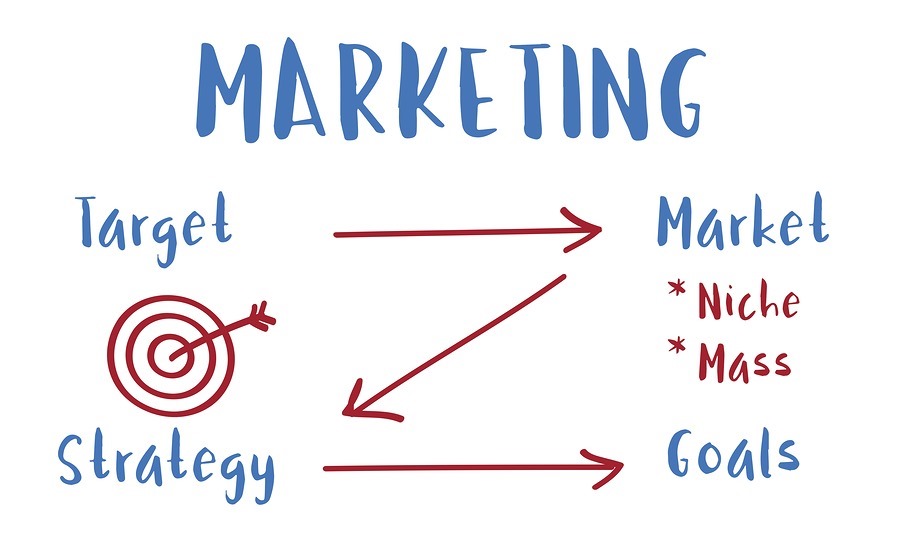
Yeast makes dough rise – without it, the bread won’t bake properly, and you’ll like have a mess on your hands.
Likewise, content is a key ingredient for your content marketing business. Content adds to your credibility and relevance. If you have content, your company will rise. If you don’t have content, your company won’t grow properly.
To maintain audience interest, you must provide constant and valuable content. Otherwise, your audience will lose interest – and your authority as a market leader will slowly disappear.
Knowing the content for your market depends on what type of market you plan to pursue: a niche market or a mass market. Both of these markets have distinctive characteristics, which directly oppose each other. Before you seek to provide content for your market, understand which is better for your business.
Niche Marketing: An Intimate Audience Relationship
Niche Marketing, also known as micro-marketing, targets a small group of consumers with tailored product needs. In this business model, the seller is concerned with narrowly defining their target group. The target focus of micro marketing is a small customer base. The chief characteristic of this type of marketing values exclusivism over inclusivism. Instead of offering the product to a wide range demographic, an avid niche marketer narrows the cross hairs on one certain people group.
At the most basic and bare minimum level, a seller should be an expert in its target group’s gender, location, education, occupation, and marital status. A relationship that infinitely deepens must be initiated by the seller to the buyer, not to merely record data, but to know the person. Each customer is like an onion with never-ending layers. Therefore, the buyer must be determined to peel back one layer at a time, never being satisfied with the current level, always hungering for newly revealed layers.
The concerns of niche marketing include:
- The firm decision-making process for what product to produce and sell
- Methods of production
- Brand management
- Pricing decisions
- Channels of distribution
- The consumer behavior of individuals
- Packing and promotional decisions
As you get to know your customers better, take note of their lifestyle, how they spend their money, what they treasure in life, the kind of books they read, where they like to travel, and the leisure activities they find enjoyable.
Success in niche marketing depends on target group satisfaction. The seller must be a good student of the buyer group, knowing their needs, wants, desires, and problems. A marketing strategy is then custom tailored to answer these needs with a specific solution rather than a generic one. If a niche marketer desires to be the best, an intimate relationship with the people in their target group must be established and continuously deepened. On the other side of things, the buyer of a niche market needs to trust the seller, both on a personal level and a professional level.
A 90s-something married couple who has 70 faithful years of relationship under their belt didn’t grow old together without being able to trust one another. In fact, trust was the mutual and foundational element that took their relationship from the drive-in movie theatre on their first date to their side by side porch rocking chairs.
A marriage relationship like this still started with that first date. A refined, mature, established, vulnerable marriage didn’t get there over night. It took years of getting to know each other through conversations, trials, and victories.
The same goes for a buyer-seller relationship in the niche market. Anything less than this type of enduring, tenacious effort on the sellers’ part results in failure. The labor is difficult and tiresome, but the result of a trusting niche relationship is worth it.
The point that a successful niche marketer knows their target group intimately and personally makes sense once you understand the four features of niche marketing:
- Product. Keep your product in a relevant distribution channel.
- Placement. Line up your product in the most palatable way for your target group. This requires more than a simple understanding of their needs; it demands a thorough study of their character, nature, and habits.
- Promotion. Advertising and sales strategies lead to word of mouth promotion of your product.
- Price. The price should reasonably fall within the customer’s income and lifestyle while reflecting the pricing of the competition.
Mass Marketing: A General Audience Relationship
Niche marketing audiences are more than figures of data, classifications, or line graphs. To the marketer, niche audiences are fathers, mothers, husbands, wives, sisters, and brothers. In niche marketing, your audience is not a number but a name. Not a statistic, but a person. Treat them as such.
So how do mass marketing audiences compare?
First, let’s take a closer look at how mass marketing, or macro-marketing, is defined. Mass marketing is a broad, widespread lens of the market and society. It values a general, large examination of the market process as a whole rather than an individual, small study.
Mass marketing differs greatly from niche marketing. In fact, they are polar opposites. Where niche marketing seeks to establish trust with customers within an exclusive set of people, mass marketing focuses on the big picture of the marketing process by examining the relationship between the production processes and purchasing patterns.
The concerns of mass marketing include:
- Marketing responsibilities
- Social responsibilities
- Marketing system efficiency
- Advertising techniques
- Consumer behavior patterns
- Social responsibilities
- Advertising
- Product features
- In-store product availability
The mass marketer’s customer target is large, encompassing the largest possible population of buyers. Quantity is the priority in mass marketing, as opposed to the niche’s pursuit of quality. Mass marketing studies both the distribution of services and products as well as the social effect.
In other words, mass marketing seeks to determine how much product a seller should produce for their audience. It’s a cause and effect relationship study. Niche marketing is marriage, where the faithful (the seller) pursues his or her spouse (the buyer) through a personal relationship. Mass marketing is the study of marriage, or how the seller and buyer interact with one another. Niche marketing is in the marriage; mass marketing is outside of the marriage.
Tying It All Together

As you think about the content for your market, remember these key steps:
- Determine your market type. Review the information above. Is your market niche or mass?
- Know the market type characteristics. Understand how the two types of market approaches differ. Say the right things to your audience and speak their language. Understand how your audience responds to your language and how you communicate with them. It can be something as simple as the words in your slogan or marketing message.
- Produce content. Here’s the bottom line – what is the buyer’s problem and how can the seller provide a solution?
Test the market before initiating your content by analyzing the competition. Notice their selling points, pricing, and delivery. Read through their websites, advertisements, and informational brochures. If there is no competition, be cautious. Is it because many companies have already tried and failed within that market? If so, consider changing markets.
Content is a major factor in your credibility and relevance online. Following these tips and guidelines will help maintain your authority as a market leader.
* Adapted lead image: Public Domain, pixabay.com via getstencil.com
Developing Content for Niche vs. Mass Audiences
The post Developing Content for Niche vs. Mass Audiences appeared first on Search Engine People Blog.
(193)
Report Post







